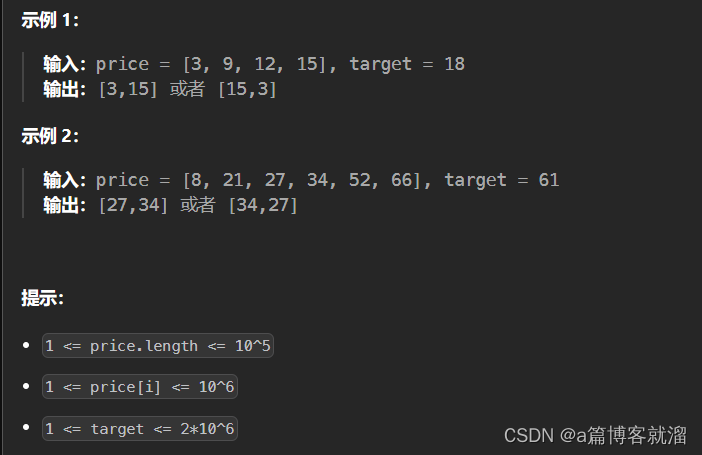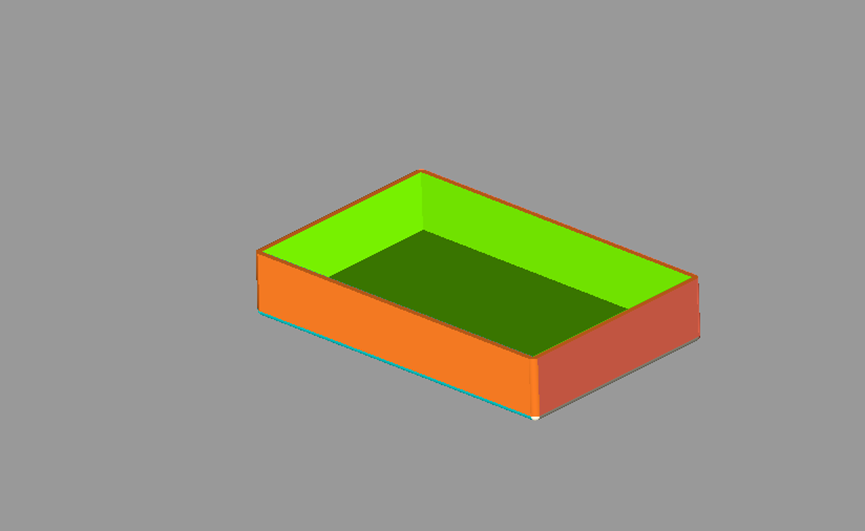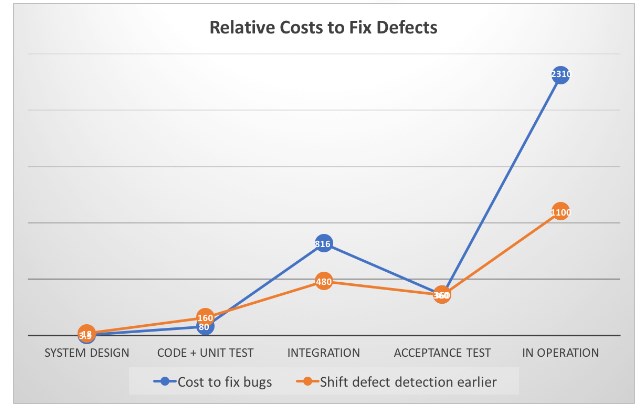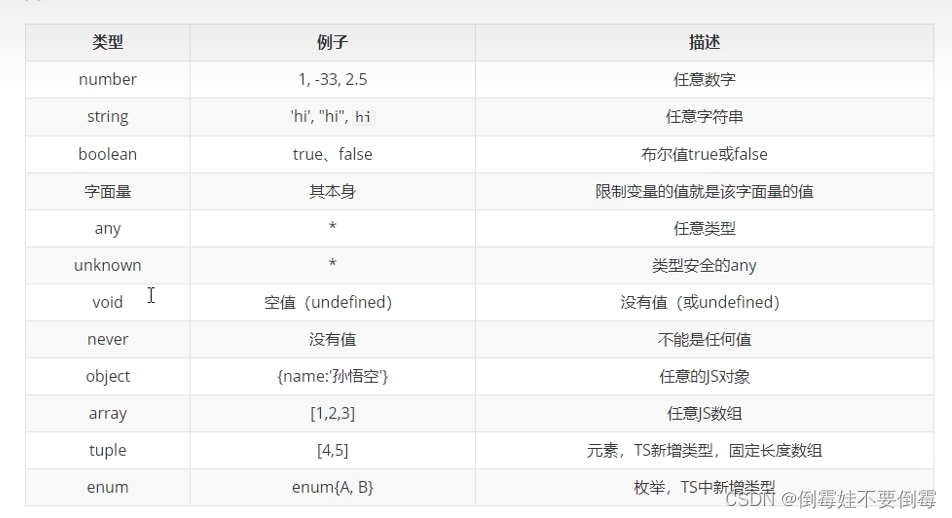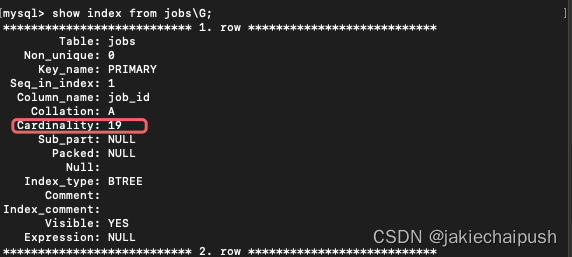目录
树
树的概念
树的表示形式
二叉树
两种特殊的二叉树
二叉树的性质
二叉树的存储
二叉树的基本操作
二叉树的遍历
二叉树的基本操作
二叉树oj题
树
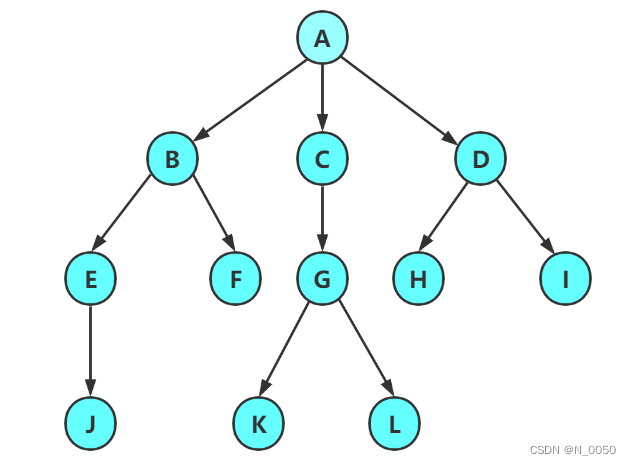
注意:树形结构中,子树之间不能有交集,否则就不是树形结构
一棵树是由若干个不相交的子树组成的
除了根结点之外,每个结点有且只有一个父结点
一棵N个结点的树有N-1条边

树的概念

结点的度:一个结点含有子树的个数称为该结点的度; 如上图:A的度为6
树的度:一棵树中,所有结点度的最大值称为树的度; 如上图:树的度为6
叶子结点或终端结点:度为0的结点称为叶结点; 如上图:B、C、H、I...等节点为叶结点
双亲结点或父结点:若一个结点含有子结点,则这个结点称为其子结点的父结点; 如上图:A是B的父结点
孩子结点或子结点:一个结点含有的子树的根结点称为该结点的子结点; 如上图:B是A的孩子结点
根结点:一棵树中,没有双亲结点的结点;如上图:A
结点的层次:从根开始定义起,根为第1层,根的子结点为第2层,以此类推
树的高度或深度:树中结点的最大层次; 如上图:树的高度为4
树的深度和结点的层次是相同的
树的表示形式
例子:
class Node {
int value; // 树中存储的数据
Node firstChild; // 第一个孩子引用
Node nextBrother; // 下一个兄弟引用
}
二叉树
一棵二叉树是结点的一个有限集合,该集合:
1. 或者为空
2. 或者是由一个根节点加上两棵别称为左子树和右子树的二叉树组成

图中看出
1. 二叉树不存在度大于2的结点
2. 二叉树的子树有左右之分,次序不能颠倒,因此二叉树是有序树
注意:对于任意的二叉树都是由以下几种情况复合而成的:

两种特殊的二叉树
满二叉树:
一棵二叉树,如果每层的结点数都达到最大值,则这棵二叉树就是满二叉树。也就是说,如果一棵
二叉树的层数为K,且结点总数是2的k次-1 ,则它就是满二叉树
完全二叉树:
完全二叉树是效率很高的数据结构,完全二叉树是由满二叉树而引出来的。对于深度为K的,有n
个结点的二叉树,当且仅当其每一个结点都与深度为K的满二叉树中编号从0至n-1的结点一一对应
时称之为完全二叉树
要注意的是满二叉树是一种特殊的完全二叉树

二叉树的性质
二叉树的存储
// 孩子表示法
class Node {
int val; // 数据域
Node left; // 左孩子的引用,常常代表左孩子为根的整棵左子树
Node right; // 右孩子的引用,常常代表右孩子为根的整棵右子树
}
// 孩子双亲表示法
class Node {
int val; // 数据域
Node left; // 左孩子的引用,常常代表左孩子为根的整棵左子树
Node right; // 右孩子的引用,常常代表右孩子为根的整棵右子树
Node parent; // 当前节点的根节点
}二叉树的基本操作
简单创建一棵二叉树:
public class BinaryTree{
public static class BTNode{
BTNode left;
BTNode right;
int value;
BTNode(int value){
this.value = value;
}
}
private BTNode root;
public void createBinaryTree(){
BTNode node1 = new BTNode(1);
BTNode node1 = new BTNode(2);
BTNode node1 = new BTNode(3);
BTNode node1 = new BTNode(4);
BTNode node1 = new BTNode(5);
BTNode node1 = new BTNode(6);
root = node1;
node1.left = node2;
node2.left = node3;
node1.right = node4;
node4.left = node5;
node5.right = node6;
}
}
从概念中可以看出,二叉树定义是递归式的,因此后序基本操作中基本都是按照该概念实现
二叉树的遍历
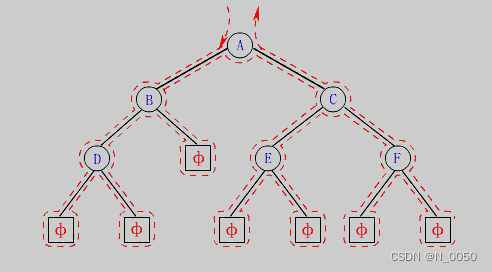
// 前序遍历:根-左子树-右子树
void preOrder(TreeNode root) {
if (root == null) {
return;
}
System.out.print(root.val + " ");
preOrder(root.left);
preOrder(root.right);
} // 中序遍历:左子树-根-右子树
void inOrder(TreeNode root) {
if (root == null) {
return;
}
inOrder(root.left);
System.out.print(root.val + " ");//对于左子树也是到走到头打印根
inOrder(root.right);
} // 后序遍历:左子树-右子树-根
void postOrder(TreeNode root) {
if (root == null) {
return;
}
postOrder(root.left);
postOrder(root.right);
System.out.print(root.val + " ");
} //层序遍历
void levelOrder(TreeNode root) {
if (root == null) {
return;
}
Queue<TreeNode> queue = new LinkedList<>();
//把根存到队列里
queue.offer(root);
while (!queue.isEmpty()) {
TreeNode cur = queue.poll();
System.out.print(cur.val + " ");
//如果左树不为空,存到队列里
if (cur.left != null) {
queue.offer(cur.left);
}
if (cur.right != null) {
queue.offer(cur.right);
}
}
}二叉树的基本操作
//递归:求整个树的结点树=左子树节点+右子树节点+根
public int size2(TreeNode root) {
if (root == null) {
return 0;
}
return size2(root.left) + size2(root.right) + 1;
}获取叶子节点的个数
//递归:获取叶子节点的个数=左子树叶子节点+右子树叶子节点
int getLeafNodeCount2(TreeNode root) {
if (root == null) {
return 0;
}
//思路一个根的左子树和它的右子树都为空说明这就是叶子节点
if (root.left == null && root.right == null) {
return 1;
}
return getLeafNodeCount2(root.left) + getLeafNodeCount2(root.right);
}获取第K层节点的个数
// 获取第K层节点的个数:左树的第K-1层+右树的第K-1层
int getKLevelNodeCount2(TreeNode root, int k) {
if (root == null) {
return 0;
}
if (k == 1) {//如果k等于1,说明k走到你想要获取的层了
return 1;
}
return getKLevelNodeCount2(root.left, k - 1) + getKLevelNodeCount2(root.right, k - 1);
} //就是递归到根没有左右子树后,然后比较左右子树谁大谁加1然后返回给对于它的根
int getHeight(TreeNode root) {
if (root == null) {
return 0;
}
int leftH = getHeight(root.left);
int rightH = getHeight(root.right);
return leftH > rightH ? leftH + 1 : rightH + 1;
}检测值为value的元素是否存在
// 检测值为value的元素是否存在
TreeNode find(TreeNode root, char val) {
if (root == null) {
return null;
}
if (root.val == val) {//如果根的val等于你要找的就返回
return root;
}
//然后从左边开始找,不是空就返回根进行判断
TreeNode root1 = find(root.left, val);
if (root1 != null) {
return root1;
}
TreeNode root2 = find(root.right, val);
if (root2 != null) {
return root2;
}
return null;
}判断一棵树是不是完全二叉树
public boolean isCompleteTree(TreeNode root) {
if (root == null) {
return true;
}
Queue<TreeNode> queue = new LinkedList<>();
queue.offer(root);
while (!queue.isEmpty()) {
TreeNode cur = queue.poll();
if (cur != null) {
queue.offer(root.left);
queue.offer(root.right);
} else {
//走到这说明为cur指向空
break;
}
}
//完全二叉树,从上到下,从左到右,不能有间隔
//如果你是一棵完全二叉树,出现空了,就不会出现其他的
while (!queue.isEmpty()) {
TreeNode cur = queue.peek();
if (cur == null) {
queue.poll();
} else {
return false;
}
}
//队列空了
return true;
}小总结:
目前遇到的这些树的问题就是递归的问题,我们把它想象把每个树都有左子树和右子
树,如果有左右子树,对于树的左子树和右子树,它自己就是根,然后递归到没有为
止,然后开始一个个返回到属于自己的根。
也就是每个结点从某种意义来说就是一个独立的子树
二叉树oj题
检查两棵树是否相同:
https://leetcode.cn/problems/same-tree/
代码:
public boolean isSameTree(TreeNode p, TreeNode q) {
if (p == null && q != null || p != null && q == null) {
return false;
}
//上面判断完,要么两个为空,要么不为空,都为空也说明这颗树相同
if (p == null && q == null) {
return true;
}
//到这里了,说明都不为空
if (p.val != q.val) {
return false;
}
//走到这里说明结构相同并且值也相同,然后开始判断左右子树
return isSameTree(p.left, q.left) && isSameTree(p.right, q.right);
}另一颗树的子树:
https://leetcode.cn/problems/subtree-of-another-tree/
代码:
public boolean isSubtree(TreeNode root, TreeNode subRoot) {
//先判断是不是空
if (root == null || subRoot == null) {
return false;
}
//判断根结点相不相同
if (isSameTree(root, subRoot)) {
return true;
}
//判断左子树相不相同
if (isSubtree(root.left, subRoot)) {
return true;
}
//判断右子树相不相同
if (isSubtree(root.right, subRoot)) {
return true;
}
return false;
} public TreeNode invertTree(TreeNode root) {
if (root == null) {
return null;
}
//这样到叶子结点直接返回
if (root.left == null && root.right == null) {
return root;
}
TreeNode node = root.left;
root.left = root.right;
root.right = node;
invertTree(root.left);
invertTree(root.right);
return root;
} public boolean isBalanced2(TreeNode root) {
if (root == null) {
return true;
}
return getHeight3(root) >= 0;
}
int getHeight3(TreeNode root) {
if (root == null) {
return 0;
}
int leftH = getHeight(root.left);
if (leftH < 0) {
return -1;
}
int rightH = getHeight(root.right);
//每个节点都要判断是否是平衡二叉树!一旦有一个节点不是平衡二叉树,就要逐层向上返回-1
if (leftH >= 0 && rightH >= 0 && Math.abs(leftH - rightH) <= 1) {
return Math.max(leftH, rightH) + 1;
} else {
return -1;
}
} public boolean isSymmetric(TreeNode root) {
if (root == null) {
return true;
}
return check(root.left, root.right);
}
public boolean check(TreeNode leftTree, TreeNode rightTree) {
//判断是不是都为空
if (leftTree == null && rightTree == null) {
return true;
}
//一个为空就说明结构不一样
if (leftTree == null || rightTree == null) {
return false;
}
//判断根值一不一样
if (leftTree.val != rightTree.val) {
return false;
}
//判断左子树的左跟右子树的的右
return check(leftTree.left, rightTree.right) && check(leftTree.right, rightTree.left);
}二叉树的构建及遍历:
二叉树遍历_牛客题霸_牛客网 (nowcoder.com)
代码:
class Solution {
static class TreeNode {
public int val;
public TreeNode left;
public TreeNode right;
public TreeNode(int val) {
this.val = val;
}
}
//根据一棵树的前序遍历与中序遍历构造二叉树
public int preIndex;//定义成 成员变量 这样方法调用的时候不会变
public TreeNode buildTree(int[] preorder, int[] inorder) {
return createTree(preorder, inorder, 0, inorder.length - 1);
}
private TreeNode createTree(int[] preorder, int[] inorder, int inBegin, int inEnd) {
//当inEnd小于inBegin,说明结点都创建完了
if (inBegin > inEnd) {
return null;
}
//从preorder前序遍历里创建一个根,每次递归都会创建
TreeNode root = new TreeNode(preorder[preIndex]);
//从inorder第二个数组中找出根结点的下标
int rootIndex = find(inorder, inBegin, inEnd, preorder[preIndex]);
if (rootIndex == -1) {
return null;
}
//preorder下标往前走
preIndex++;
root.left = createTree(preorder, inorder, inBegin, rootIndex - 1);
root.right = createTree(preorder, inorder, rootIndex + 1, inEnd);
return root;
}
//从inorder第二个数组中找出根结点的下标
private int find(int[] inorder, int inBegin, int inEnd, int Key) {
//为什么i <= inEnd,因为上面已经给inEnd赋值为长度减1了
for (int i = inBegin; i <= inEnd; i++) {
if (inorder[i] == Key) {
return i;
}
}
return -1;
}
} public TreeNode lowestCommonAncestor(TreeNode root, TreeNode p, TreeNode q) {
if (root == null) {
return null;
}
//如果p或者q一开始就在root上,root就是最近公共祖先
if (root == p || root == q) {
return root;
}
TreeNode leftTree = lowestCommonAncestor(root.left, p, q);
TreeNode rightTree = lowestCommonAncestor(root.right, p, q);
//走到这一步,说明p和q要么各自在一侧,要么都在左边,要么都在右边
if (leftTree != null && rightTree != null) {
return root;
} else if (leftTree != null) {
return leftTree;
} else {
return rightTree;
}
}根据一棵树的前序遍历与中序遍历构造二叉树:
105. 从前序与中序遍历序列构造二叉树 - 力扣(LeetCode)
代码:
public int preIndex;//定义成 成员变量 这样方法调用的时候不会变
public TreeNode buildTree(int[] preorder, int[] inorder) {
return createTree(preorder, inorder, 0, inorder.length - 1);
}
private TreeNode createTree(int[] preorder, int[] inorder, int inBegin, int inEnd) {
//当inEnd小于inBegin,说明结点都创建完了
if (inBegin > inEnd) {
return null;
}
//从preorder前序遍历里创建一个根
TreeNode root = new TreeNode(preorder[preIndex]);
//从inorder第二个数组中找出根结点的下标
int rootIndex = find(inorder, inBegin, inEnd, preorder[preIndex]);
if (rootIndex == -1) {
return null;
}
//preorder下标往前走
preIndex++;
root.left = createTree(preorder, inorder, inBegin, rootIndex - 1);
root.right = createTree(preorder, inorder, rootIndex + 1, inEnd);
return root;
}
private int find(int[] inorder, int inBegin, int inEnd, int preIndex) {
//为什么i <= inEnd,因为上面已经给inEnd赋值为长度减1了
for (int i = inBegin; i <= inEnd; i++) {
if (inorder[i] == preIndex) {
return i;
}
}
return -1;
}代码:
class SolutionTree {
static class TreeNode {
public int val;
public TreeNode left;
public TreeNode right;
public TreeNode(int val) {
this.val = val;
}
}
//根据一棵树的中序遍历与后序遍历构造二叉树
public int postIndex;
public TreeNode buildTree(int[] inorder, int[] postorder) {
postIndex = postorder.length - 1;
return createTree(inorder, postorder, 0, inorder.length - 1);
}
private TreeNode createTree(int[] inorder, int[] postorder, int inBegin, int inEnd) {
//当inEnd小于inBegin,说明结点都创建完了
if (inBegin > inEnd) {
return null;
}
//从postorder后序遍历里创建一个根,每次递归都会创建
TreeNode root = new TreeNode(postorder[postIndex]);
//从inorder第二个数组中找出根结点的下标
int rootIndex = find(inorder, inBegin, inEnd, postorder[postIndex]);
if (rootIndex == -1) {
return null;
}
postIndex--;
//从右边开始递归
root.right = createTree(inorder, postorder, rootIndex + 1, inEnd);
root.left = createTree(inorder, postorder, inBegin, rootIndex - 1);
return root;
}
//从inorder数组中找出根结点的下标
private int find(int[] inorder, int inBegin, int inEnd, int Key) {
//为什么i <= inEnd,因为上面已经给inEnd赋值为长度减1了
for (int i = inBegin; i <= inEnd; i++) {
if (inorder[i] == Key) {
return i;
}
}
return -1;
}
}总结:二叉树的内容可以说是初阶数据结构难以理解的,基本上都是用递归实现的,需要慢慢练习
才能掌握






